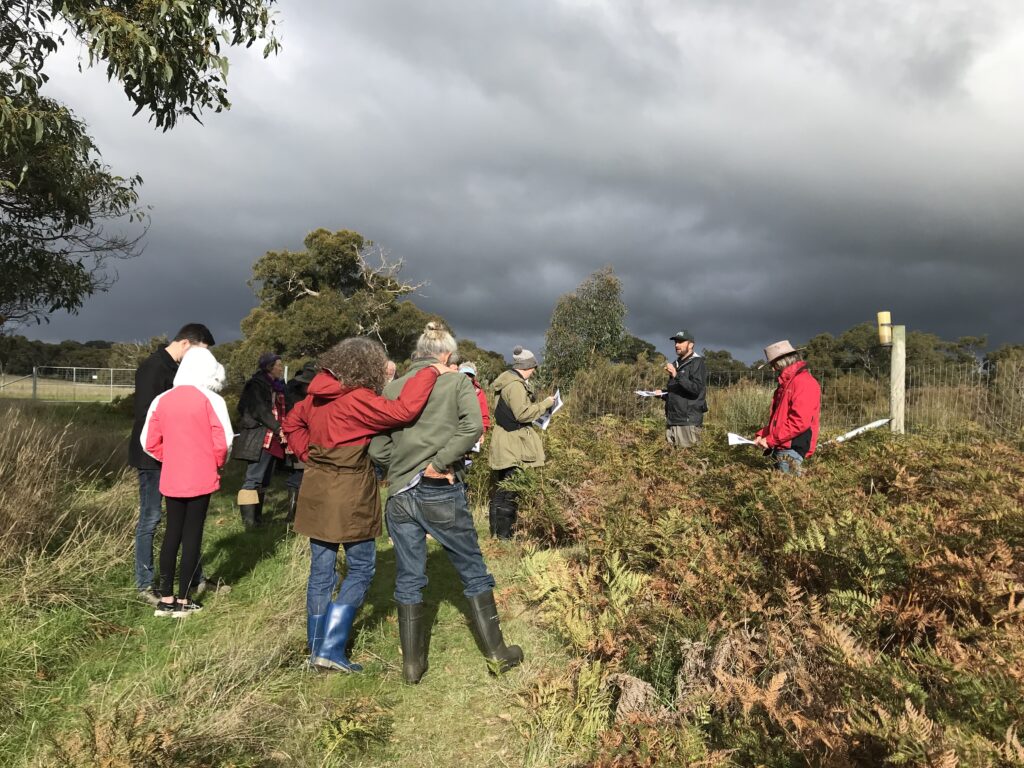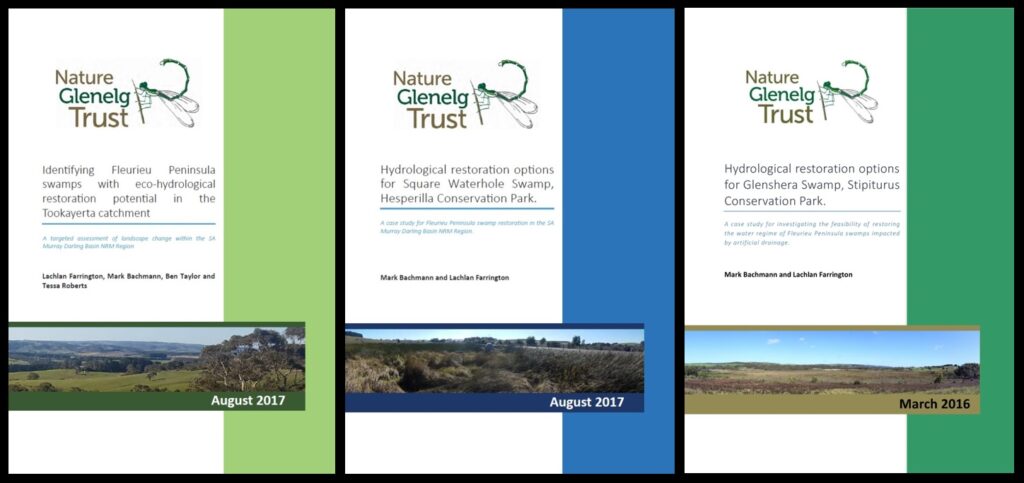Good food, wonderful people and sharing great results! Recapping the Fleurieu Swamps Field Day in SA
On Saturday the 20th of May, we gathered with a group of swamp people… no not the scary kind! Wonderful people keen to learn more about the restoration of one of our critically endangered wetland ecosystems, Fleurieu Peninsula Swamps. The aim was to showcase the eco-hydrological restoration works undertaken so far by NGT at two important swamps near Mt Compass, some that began back in 2017 at Glenshera Swamp, and some just recently started at Square Waterhole Swamp.
Members of the Friends of Stipiturus and Hesperilla Conservation Parks, local land-owners and interested members of the community joined us at the hall in Mount Compass, 60km south of Adelaide, escaping some morning rain showers.
NGT’s Mark Bachmann regaled the audience with the history of how the swamps of the area (Fleurieu Penninsula Swamps), explaining how and why they became so endangered. A wonderful array of old maps and accounts from the decades after European colonisation, really helped to bring this history to life.
To uncover more of this history, you can also take a closer look at NGT’s three assessment reports, where much of the content mark shared in his talk is explored in more detail. These pdf documents (cover shown below) can be found on the NGT website, at these links: (1) Tookayerta Catchment Assessment, (2) Square Waterhole Swamp Assessment, and (3) Glenshera Swamp Assessment.
A significant portion of Mark’s talk was also dedicated to exploring the history of Square Waterhole Swamp.
It was interesting to learn that the portion of Square Waterhole Swamp that now lies within Hesperilla Conservation Park, was once intensively drained and sown to pasture for grazing by dairy cows, but has slowly regenerated with native swamp vegetation over several decades, as a result of the peat subsiding and slowly resaturating with groundwater. The change since the 1940s and attempts to drain this area are illustrated in the set of images below. (You can also learn more about the process of peat subsidence and vegetation change in peatlands here.)
During this part of the talk, we also saw a number of before and after images of the recent works undertaken to reverse the changes to the hydrology of this wetland. For more in-depth information about those works, please take a closer look at last month’s post which describe the recent remedial works in detail. For just one example, the images below show where a blackberry invested spoil bank and adjacent 2-metre deep drain on the Alexandrina Council Reserve next to the Park have been backfilled, immediately bringing the shallow groundwater back to the surface. This restored area is now expected to recover with endangered Fleurieu Swamp vegetation!

The presentation was followed by a tasty hot curry lunch, cooked up by Tam of local restaurant Moon-Garden.
Then after lunch, we headed over to nearby Stipiturus Conservation Park to tour around Glenshera Swamp, the largest remaining intact example of a Fleurieu Peninsula Swamp.
It is hard to believe, but after completion of NGT’s eco-hydrological assessment of the site in 2016, NGT has been undertaking works to restore the hydrology of this site since 2017! In-fact, I started my internship with NGT filling and lugging sandbags in this particular swamp, helping to construct the very first hydro-restoration weir structures in the old bypass drain which had been dug by farmers in the 1940s to divert water away from the main swamp.
Many of our readers would have been following this story over the years, so if you missed the field day and would like to get a sense of what we discussed during our time on-site, you can download and print a copy of the handout here, or take a look in the pdf reader below.
To round out this overview of the field day, below you will find a collage of images from the visit to Glenshera Swamp within Stipiturus CP.
A big thanks to everyone for coming along and spending the day with us!











This project is being delivered by NGT in partnership with Friends of Stipiturus and Hesperilla Conservation Parks, funded by the National Parks and Wildlife Service, Friends of Parks Partnership Grants Program.




